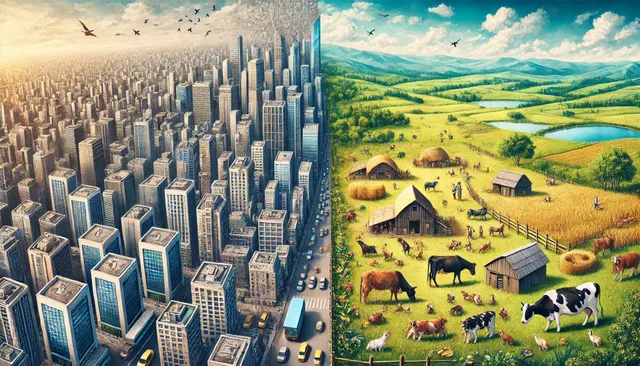The Future of Animal Husbandry in an Era of Urban Congestion
Introduction

As global urbanization accelerates, more people are choosing to live in densely populated cities rather than in rural, open spaces. This trend presents unique challenges and opportunities for animal husbandry, an age-old practice traditionally associated with expansive farmland. The future of animal husbandry in this new context will require innovative approaches to ensure sustainability, efficiency, and animal welfare.
The Challenges of Urbanization
Space Constraints
One of the primary challenges is the lack of space. Traditional animal husbandry relies on large areas of land for grazing and housing livestock. In urban environments, such spaces are limited and expensive, necessitating a shift towards more space-efficient practices.
Environmental Impact
Urban areas are already burdened with pollution and waste management issues. Introducing animal husbandry into these environments can exacerbate these problems if not managed properly. Innovative solutions are needed to mitigate the environmental impact.
Animal Welfare
Ensuring the welfare of animals in confined urban spaces is another significant concern. Adequate living conditions, access to fresh air, and proper sanitation must be maintained to prevent diseases and stress in livestock.
Innovative Solutions
Vertical Farming and Urban Agriculture
Vertical farming and urban agriculture have shown great promise in addressing space constraints. By utilizing vertical space in buildings, urban farms can produce food, including animal products, in a controlled environment. This method can also incorporate advanced technologies like hydroponics and aquaponics, which can support the growth of animal feed and the rearing of fish and poultry.
Smart Technology and IoT
The integration of smart technology and the Internet of Things (IoT) can revolutionize urban animal husbandry. Smart sensors can monitor the health and well-being of animals, optimizing feeding, watering, and living conditions. Automated systems can also help manage waste and ensure cleanliness, reducing the environmental impact.
Alternative Protein Sources
The development of alternative protein sources, such as lab-grown meat and insect farming, offers a sustainable solution to traditional animal husbandry. These methods require significantly less space and resources, making them ideal for urban settings.
Community-Based Approaches
Community-based urban farms and cooperative models can distribute the responsibilities and benefits of animal husbandry across multiple households. This approach can help integrate animal farming into urban life, providing fresh produce and strengthening community bonds.
Conclusion
The future of animal husbandry in an era of urban congestion lies in innovative, sustainable practices that make efficient use of limited space and resources. By embracing technologies like vertical farming, smart systems, and alternative protein sources, we can ensure that animal husbandry continues to thrive even as our living spaces become more crowded. These advancements not only support food security but also promote animal welfare and environmental sustainability in our increasingly urbanized world.
Congratulations, your post has been upvoted by @upex with a 61.07% upvote. We invite you to continue producing quality content and join our Discord community here. Keep up the good work! #upex